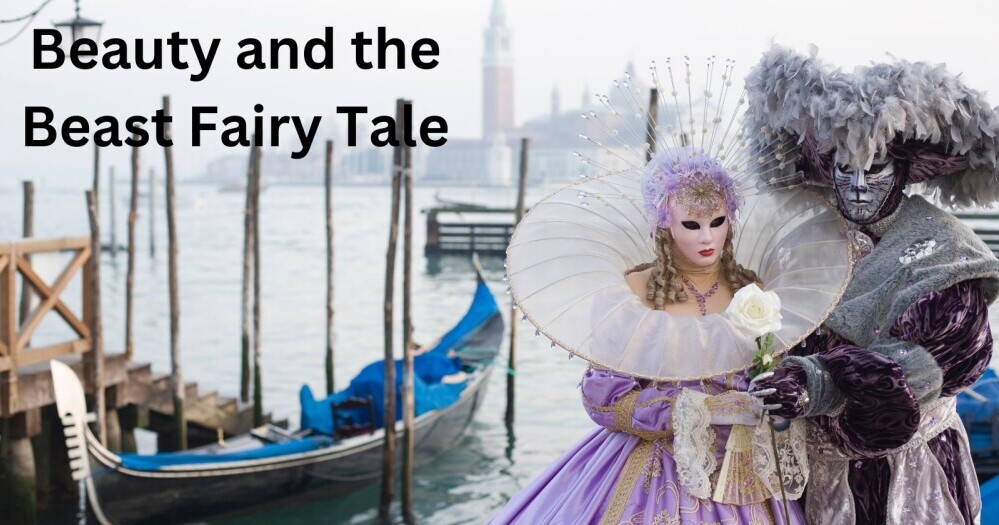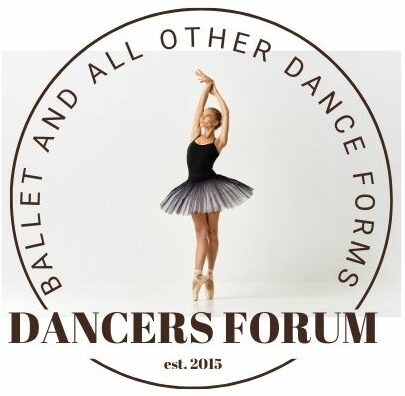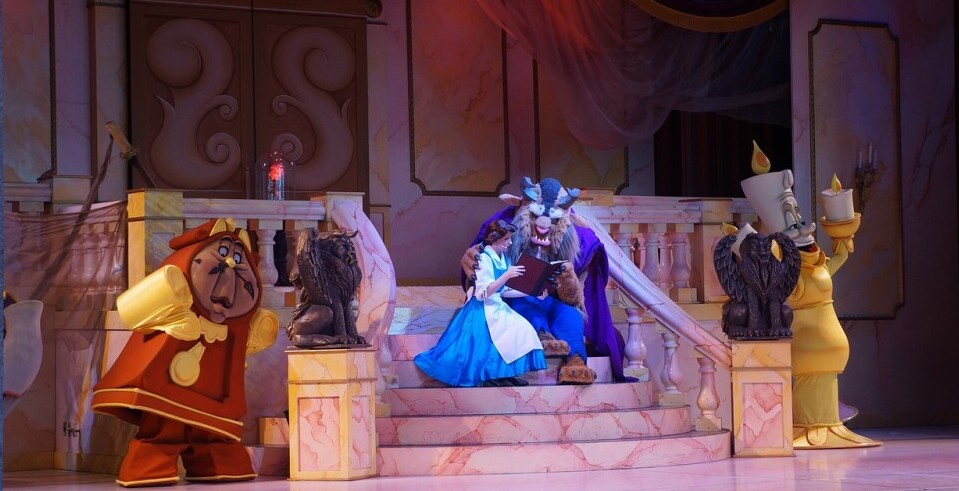The Beauty and The Beast Fairy Tale was a ballet done in one act choreographed by John Cranko.
The music was done by Maurice Ravel (Ma Mére l’Oie) and the scenery and costumes were organized by Margaret Kaye.
The first performance of Beauty and The Beast happened at Saddler’s Wells Theatre with Patricia Miller and David Poole on the 20th of December 1949.
It was then revived for the Northern Ballet Theatre with the set by Michael Holt and costumes by Peter Farmer in Manchester in May of 1977.

Beauty And The Beast Fairy Tale Ballet Synopsis
The Beauty and the Beast Fairy Tale ballet is an extended pas de deux set to four of the five fairy-tale evocations that make up Ravel’s Mother Goose Suite for piano duet.
The scene is the enchanted forest which is the Beast’s domain. Here a beautiful girl wanders into the forest and the beast hides so that he doesn’t frighten her, although he wishes to greet her.
The girl wanders deeper into the forest and gets lost, so she dances to keep up her spirits. She becomes exhausted and sleeps.
When she wakes up, she decides to eat some fruit and she sees on a tree, but it is the Beast holding it with an upraised arm.
She faints with horror and the Beast carries her to rest on a bank.
When she regains her senses she is again terrified by him and tries to flee, but the enchanted trees stop her. The Beast offers her a flower, which she rejects and the Beast falls to the ground and weeps.
The way is clear for the girl to escape, but now she is seized with compassion for the Beast.
When she reaches down and touches his face a transformation takes place. He is revealed as a handsome young man.
Enraptured, the girl dances happily with him and as the music ends the lovers are seen united.
This short, admirably crafted duet showed Cranko dealing early in his career with a favorite theme of his work which was the nature of love and the deceptiveness of appearance.
This ballet also marked his arrival as a significant choreographer.
He showed early promise with the University of Cape Town School of Ballet under the direction of Dulce Howes for whom he created his first ballet on Stravinsky’s A Soldier’s Tail in 1942.
Cranko was offered further opportunities in Britain in 1946 by the Royal Academy of Dancing’s Production Club. Initiated by Ursula Moreton, this was the first post-war attempt to organize for aspirant choreographers.
For the Production Club, Cranko created Children’s Corner in November 1947 which was taken into the repertory of the Sadler’s Wells Theatre Ballet five months later.
With the Theatre Ballet under Peggy van Praagh, Cranko developed his craft.
Beauty and the Beast illustrates four of John Cranko’s finest characteristics:
- His invention of original, evocative movement based on classical technique;
- his strong sense of atmosphere and place;
- his ability to develop character out of the qualities of his dancers, and;
- his sympathetic use of music.


I was getting ready for a house move when I recently came across a very old video of Beauty and the Beast. I watched it with my granddaughter, who was enchanted by the story. So it is great to see that it was also produced as a ballet production.
It would be interesting to know if the last performance as Beauty and the Beast as a ballet, was in 1977 in Manchester, or if it has been performed again. I would love to watch the ballet if it is indeed possible. Thank you.
Hi Line,
Beauty and The Beast Fairy Tale Ballet has been performed many times since its first showing, and it has also evolved in some companies. Here is one example.